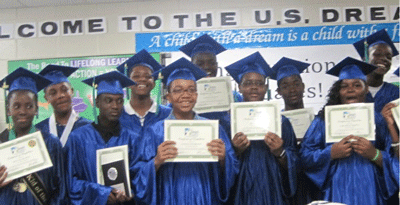The trend is unmistakable. The story— by the numbers— confirms that young women in Baltimore have reversed course dramatically from two to three decades ago when teenage motherhood was epidemic. Not only do statistics show young women eschewing underage pregnancy, they also reveal a dramatic spike in enrollment and matriculation from colleges and universities.
In both the areas of decreased pregnancy and increased education attainment, teens and young women in Baltimore are mirroring a national trend. The numbers are stark. In Baltimore City, teen pregnancy in 1997 was roughly 4.5 percent, dropping to 3.7 percent by 2001; 3.2 percent by 2005; and 2.9 percent by 2017. Concurrently, national teen pregnancy statistics fell just as precipitously, going from 4.1 percent in 2007 to 2.9 percent in 2012; and 2.0 percent by 2016.
Baltimore teens accomplished this phenomenal turnaround with help from the City of Baltimore through programs facilitated by the Health Department, and also with private sector support.
The Baltimore City Health Department, partnering with Family League of Baltimore, developed TPPI, the Teen Pregnancy Prevention Initiative, for teens at-risk to become pregnant. Under this arrangement, and with the participation of other stakeholders in the social sciences and medical fields, TPPI addressed factors related to policies, systems and services for families and the community through four primary methods:
•A taskforce comprised of academic, medical and community agencies developing strategy, plans and implementation procedures.
•Engagement and outreach operations to improve clinical services for adolescents and facilitate easier teen access to services, including home visits.
•A Youth Advisory Council staffed by a group of youth from Baltimore City meeting bi-monthly to offer feedback and share ideas. These youth conducted intake for teens with questions and did community outreach, including home visits.
•A social media campaign entitled “Know What U Want U Choose” acknowledges young adult’s desire for emancipation and assists them to develop blueprints for their futures interactively via Internet
While the teens’ attention was held by their pregnancy-prevention mentors, they were counseled at the same time to pursue their educational and career aspirations in anticipation of being better prepared, stable mothers— eventually. The following statistics strongly suggest that young women who previously participated en masse in at-risk-for-pregnancy behavior, were now outnumbering young men in college placement in Baltimore City-area colleges.
These are the female enrollment numbers: The Community College of Baltimore County, 59.93 percent. Towson University, 61.4 percent. Johns Hopkins University, 51.31 percent. University of Maryland-Baltimore County, 46.78 percent. Baltimore City Community College, 67.28 percent. Morgan State University, 55.84 percent. University of Baltimore, 58.02 percent. Loyola University Maryland, 61.84 percent. Stevenson University, 67.06 percent. University of Maryland-Baltimore, 72.08 percent. Notre Dame of Maryland University, 86.08 percent.
These reversals of fortune are stunning. For ambitious young women who were not inclined to an academic higher education, the military was the viable option. Not only will the Federal government provide higher education benefits to veterans after their tours of duty are completed, the breadth and scope of specialized training in the military provides female vets with a plethora of well-paying post-military professional opportunities, and lifetime medical benefits.
Despite education, job training and medical benefits available from the military, it must not be ignored that war is the military’s primary business. Young women signing up for military duty during wartime, as the U.S. has been engaged now for 18 straight years, speaks to the bravery, courage and honor of would-be teen moms from Baltimore and elsewhere.
